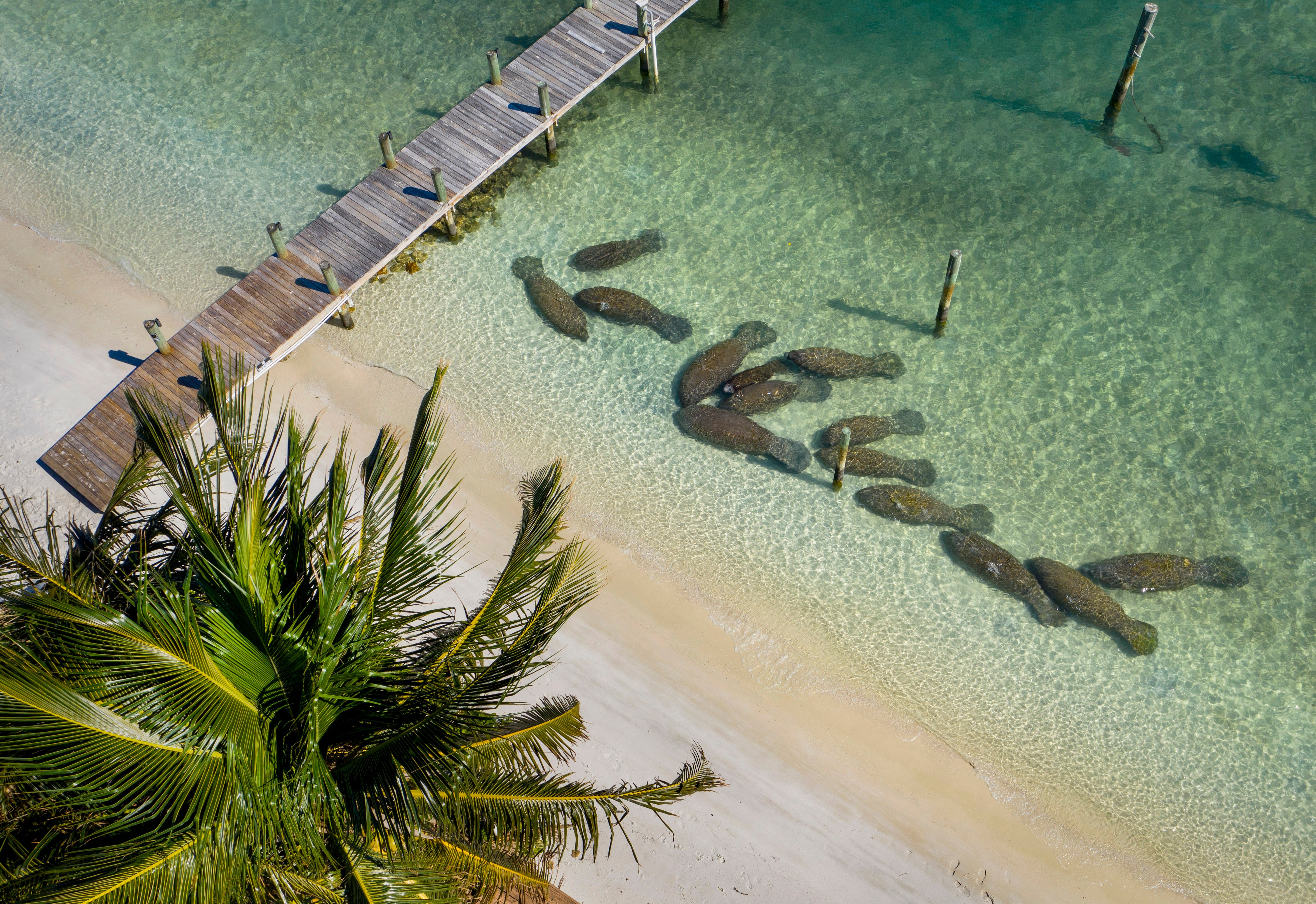Manatee feeding program ready as winter tests survival
As winter approaches Florida, state wildlife officials say a test feeding plan will save many threatened manatees from starvation

Your support helps us to tell the story
From reproductive rights to climate change to Big Tech, The Independent is on the ground when the story is developing. Whether it's investigating the financials of Elon Musk's pro-Trump PAC or producing our latest documentary, 'The A Word', which shines a light on the American women fighting for reproductive rights, we know how important it is to parse out the facts from the messaging.
At such a critical moment in US history, we need reporters on the ground. Your donation allows us to keep sending journalists to speak to both sides of the story.
The Independent is trusted by Americans across the entire political spectrum. And unlike many other quality news outlets, we choose not to lock Americans out of our reporting and analysis with paywalls. We believe quality journalism should be available to everyone, paid for by those who can afford it.
Your support makes all the difference.As winter approaches Florida, a pilot feeding plan could save many manatees from starvation — but they will still face the long-term threat of manmade water pollution stifling their food supply, wildlife officials said Wednesday.
The slow-moving marine mammals will soon begin to congregate at warm-water sites such as power plants as the ocean temperatures cool, and there may not be enough seagrass to sustain them, officials told the state Fish and Wildlife Conservation Commission.
Florida Power & Light, the state’s largest electric utility, is putting up $700,000 for a “temporary field response station” to feed the manatees at its plant in Cape Canaveral on the East Coast The money is also for rescue and rehabilitation of distressed manatees, the company said in a news release.
The program has not been tried before.
“The eyes of the world are on this,” said wildlife commission chair Rodney Barreto. “We've got to get it right.”
Officials stress that people should not randomly feed the marine mammals. They say it is llegal to do so and leads to an unhealthy association between the animals and food sources.
The pilot feeding program is intended as a temporary stopgap to prevent more manatee deaths while the state spends millions of dollars restoring the seagrass beds in areas such as the Indian River Lagoon, which is a critical winter habitat.
There are between 7,000 and 8,000 manatees — also known as sea cows — in Florida, according to state estimates. They are close relatives of elephants and can live up to 65 years, but they reproduce slowly.
More than 1,000 manatees have died in Florida waters so far in 2021, by far a record number in a single year. Some are killed by boat strikes and many more scarred by those collisions, but what is most concerning is that so many starve to death because polluted water kills the seagrass upon which they depend.
The issue facing wildlife officials in the long term is how to halt fertilizer-laden runoff from sugar farms and other agricultural operations, as well as stormwater and sewage flows from cities into bays and estuaries that breed harmful organisms such as blue-green algae. Warmer water and air temperatures triggered by climate change make the problem worse, many experts say.
“We all know the underlying problem is water quality,” said Larry Williams, Florida state supervisor with the U.S. Fish and Wildlife Service, adding that other marine creatures will soon suffer as well. “They are declining too, just like the manatees are.”
Florida wildlife commission member Mike Sole, who is an executive with FPL's parent company NextEra Energy Inc., also said the manatee death crisis is “really just a symptom” of the greater pollution problem.
“We've got to also focus on the cure of water quality," Sole said.
Gov. Ron DeSantis last month announced $481 million in water quality improvement grants throughout the state. Of that, $53 million is being allocated for wastewater treatment in the Indian River Lagoon area.
Barreto, the Florida wildlife commission chairman, said there must be a sustained effort to restore the manatee-friendly seagrass beds and clean up the polluted water causing the problem.
“This is not about a photo op,” Barreto said. “We want to make sure the herd survives.”